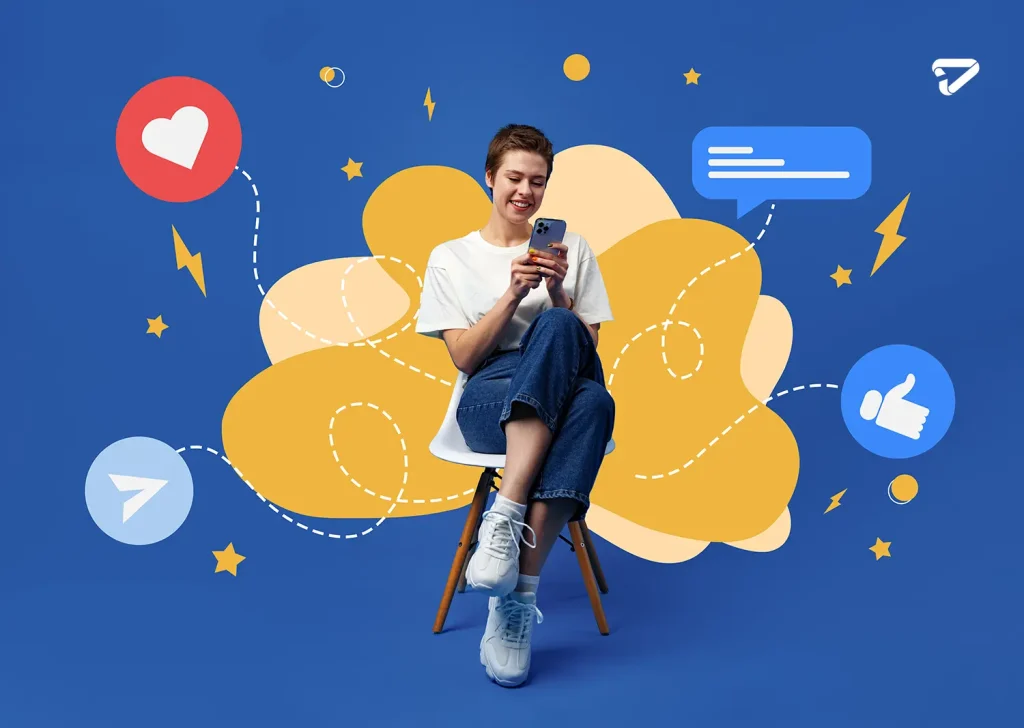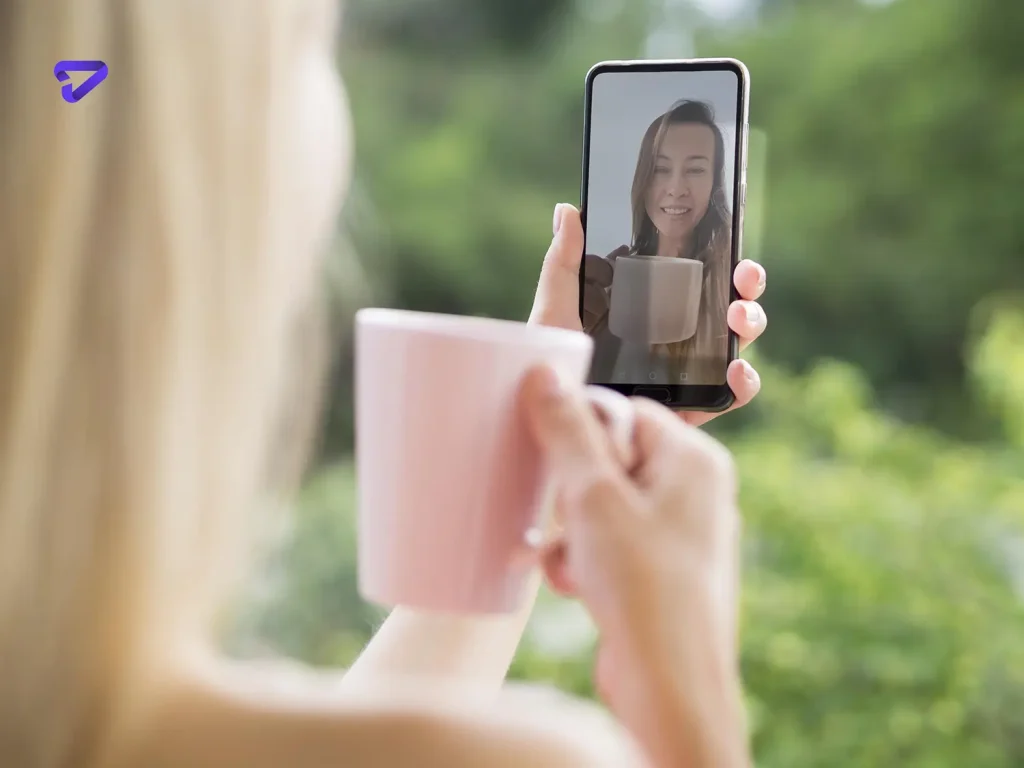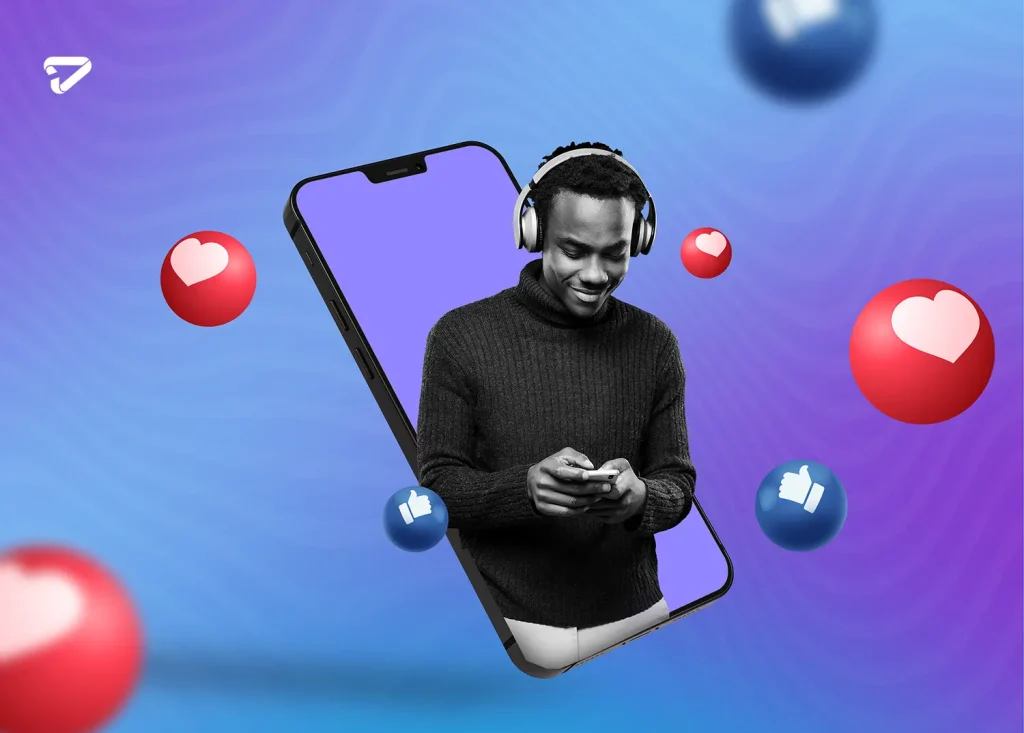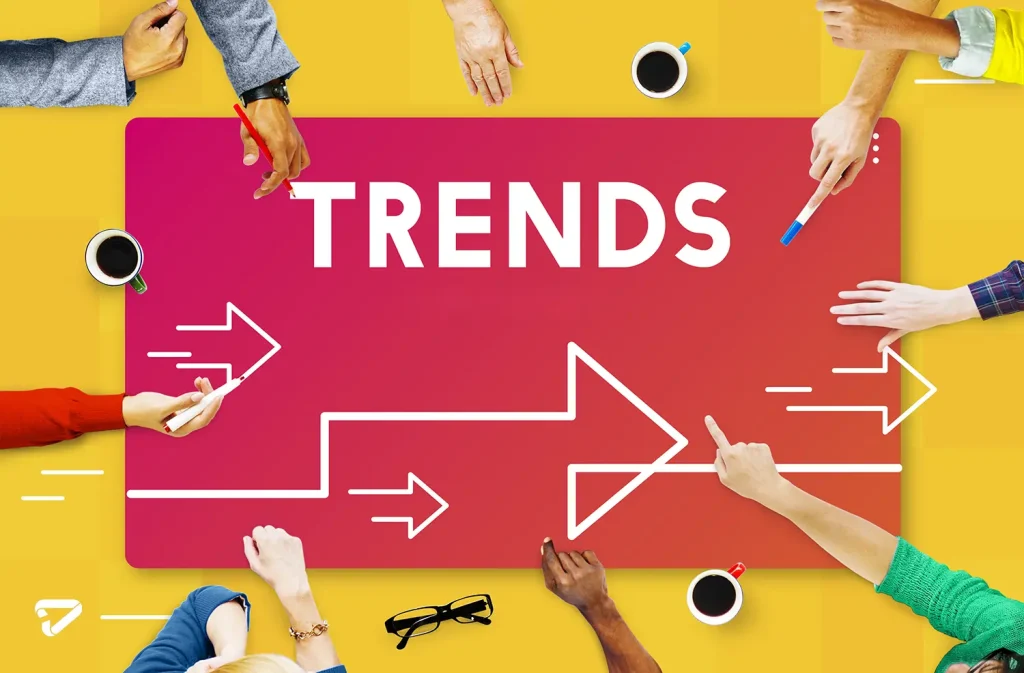
Creating Viral Content: Tips from Social Media Experts
Creating viral content requires a deep understanding of your audience, the ability to tell engaging stories, and strategic use of social media to amplify your message.
In the vast digital ocean, creating viral content is like striking gold. It’s the holy grail of content marketing, the elusive treasure that every business craves.
But what does it take to craft content that spreads like wildfire across social media platforms?
The answer lies in understanding the secret sauce that social media experts swear by.
Buckle up, because we’re about to dive deep into the art of creating viral content that will have your audience hooked and your brand soaring to new heights.
Social media engagement is crucial for creating viral content, as it helps amplify your message, foster community interaction, and increase the likelihood of widespread sharing.
The Power of Emotion
One of the most potent ingredients in the viral content recipe is emotion.
According to a study by Buzzsumo, the most shared content on social media evokes powerful emotions like awe, laughter, or amazement.
Social media experts understand this phenomenon and harness it to create content that resonates deeply with their audience.
Example: Remember the viral video of a golden retriever welcoming home a baby with a gentle snuggle?
That heartwarming moment tugged at the heartstrings of millions, racking up over 30 million views on YouTube.
Emotion has a way of making content stick in our minds and fueling the urge to share it with others.
Tapping into Relatable Emotions
While evoking strong emotions is crucial, social media experts also understand the importance of tapping into relatable, everyday emotions that resonate with their target audience.
By creating content that mirrors the experiences, struggles, and triumphs of their audience, they foster a deeper connection and increase the likelihood of their content going viral.
Example: The “Thoughts of Dog” Twitter account, with its hilarious and endearing musings from a dog’s perspective, struck a chord with millions of pet owners and animal lovers.
Its ability to capture the relatable emotions of having a furry companion made it an instant hit, amassing over 4 million followers.
Emotional Storytelling: A Powerful Combination
Combining emotion with storytelling can create a potent formula for viral content.
Social media experts understand that a well-crafted narrative that tugs at the heartstrings can leave a lasting impact and inspire sharing.
Exampble: The “Love Has No Labels” campaign by the Ad Council was a masterclass in emotional storytelling.
The video depicted real-life couples embracing behind an X-ray screen, challenging viewers’ assumptions and promoting inclusivity.
The powerful message, coupled with the emotional reveal, struck a chord with audiences worldwide, garnering over 168 million views and numerous accolades.
Storytelling: The Art of Captivation
Humans have been hardwired for storytelling since the dawn of time.
It’s no surprise, then, that social media experts leverage this age-old tradition to craft viral content.
A well-told story has the power to transport your audience, forge connections, and leave a lasting impression.
According to a study by HubSpot, articles that incorporate storytelling elements are more likely to be shared on social media.
The key is to weave your brand’s message into a compelling narrative that keeps your audience engaged and invested.
Example: Airbnb’s “Don’t Go There. Live There” campaign is a masterclass in storytelling.
By sharing the authentic experiences of real travelers, Airbnb not only promotes its services but also taps into the universal human desire for adventure and connection.
The Hero’s Journey: A Timeless Narrative Structure
One of the most effective storytelling techniques employed by social media experts is the “hero’s journey” narrative structure.
This timeless framework, which dates back to ancient mythology, follows a protagonist’s transformation from an ordinary person to a heroic figure who overcomes challenges and emerges victorious.
By crafting content that aligns with this narrative structure, brands can create a sense of familiarity and resonance with their audience, increasing the likelihood of their content going viral.
Example: Nike’s “Dream Crazy” campaign, featuring Colin Kaepernick and other athletes who defied adversity, masterfully employed the hero’s journey narrative.
The powerful storytelling and relatability of the athletes’ struggles and triumphs struck a chord with audiences, sparking widespread discussions and sharing across social media platforms.

Storytelling Through User-Generated Content
Social media experts recognize that some of the most compelling stories come directly from their audience.
By encouraging user-generated content (UGC) and amplifying real-life stories and experiences, brands can tap into authentic narratives that resonate with their target audience.
Example: The #LoveWins campaign by Honey Maid captured the hearts of millions by showcasing diverse families and their stories through user-submitted content.
The brand’s inclusive approach and celebration of love in all its forms created a powerful narrative that went viral, garnering over 10 million views and widespread acclaim.
Visuals: A Picture Worth a Thousand Shares
In the fast-paced world of social media, visuals are king. Our brains process visual information at lightning speed, making it easier for us to digest and remember.
Social media experts understand this principle and leverage eye-catching visuals to capture attention and increase shareability.
According to a study by Semrush, visual content is 40 times more likely to be shared on social media than other types of content.
This could include everything from stunning photography and compelling infographics to engaging videos and GIFs.
Exbample: The iconic “Dumb Ways to Die” campaign by Metro Trains in Melbourne went viral with its catchy animated video and quirky characters.
The visuals were not only entertaining but also effectively conveyed an important safety message, making it a prime example of viral content done right.
The Art of Storytelling Through Visuals
While visuals are attention-grabbing on their own, social media experts understand the power of combining visuals with storytelling to create truly captivating content.
By carefully curating and sequencing visuals, they can weave narratives that leave a lasting impact on their audience.
Example: The “Love Story” advertisement by Google, featuring a series of search queries and visuals that chronicled a couple’s journey from their first meeting to their final days, was a masterful example of visual storytelling.
The emotional and relatable narrative, conveyed solely through visuals, struck a chord with viewers worldwide, garnering over 15 million views and widespread praise.

Interactive and Immersive Visuals
In the ever-evolving digital landscape, social media experts are exploring new frontiers of interactive and immersive visuals to create viral content.
From 360-degree videos and virtual reality experiences to augmented reality filters and gamified content, these innovative formats offer unique opportunities to captivate and engage audiences.
Example: The “Burger Blend” campaign by Burger King leveraged augmented reality to create a viral sensation.
By allowing customers to virtually “burn” their competitors’ ads using a dedicated app, Burger King not only generated buzz and shares but also demonstrated its innovative use of immersive visuals to create a memorable brand experience.
Tapping into Trending Topics
Social media experts have their fingers on the pulse of what’s trending.
By tapping into hot topics and cultural conversations, they create content that feels relevant and timely, increasing its chances of going viral.
Newsjacking
This technique involves piggybacking on current events or news stories to create content that resonates with the public’s collective consciousness.
Hashtag hijacking
Leveraging popular hashtags can help your content gain visibility and reach new audiences.
Example: During the 2022 FIFA World Cup, brands like Adidas and Gatorade jumped on the soccer craze by creating engaging content around the tournament, tapping into the global fervor surrounding the event.
Staying Agile and Reactive
To effectively tap into trending topics, social media experts must remain agile and reactive.
They closely monitor social media conversations, news cycles, and cultural events, ready to pivot their content strategies and capitalize on timely opportunities.
Example: During the COVID-19 pandemic, brands like Clorox and Purell swiftly adapted their content to address consumer concerns and provide relevant information about disinfection and hygiene.
Their agility in responding to the trending topic allowed them to create content that resonated with audiences and provided value during a challenging time.
Balancing Relevance and Authenticity
While tapping into trending topics can boost visibility and shareability, social media experts must strike a delicate balance between relevance and authenticity.
They must ensure that their content aligns with their brand’s values and voice while still resonating with the current cultural zeitgeist.
Example: The “Share a Coke” campaign by Coca-Cola expertly balanced relevance and authenticity.
By printing popular names and phrases on their iconic bottles, the brand tapped into the trend of personalization while staying true to its classic branding and messaging.
The campaign’s success demonstrated the power of creating content that feels both timely and authentic.

User-Generated Content: The Power of the People
Social media experts understand that sometimes the best viral content comes from the very people they’re trying to reach.
User-generated content (UGC) taps into the power of authenticity and social proof, creating a sense of community and fostering trust.
According to a study by Stackla, UGC campaigns earn 28% higher engagement rates compared to traditional campaigns.
By encouraging your audience to share their experiences, stories, or creations, you not only generate authentic content but also foster a deeper connection with your brand.
Example: GoPro’s success is largely attributed to its “Photo of the Day” campaign, which showcases stunning user-submitted photos and videos.
This not only generates a constant stream of fresh content but also inspires others to capture and share their adventures with GoPro cameras.
Fostering a Sense of Community
One of the key benefits of leveraging user-generated content is the ability to foster a sense of community around your brand.
By actively involving your audience in the content creation process, you create a shared experience that strengthens the bond between your brand and its followers.
Example: The #ShareYourEars campaign by Disneyland encouraged visitors to share photos of themselves wearing Mickey Mouse ears.
By curating and showcasing these user-generated images, Disneyland not only generated a constant stream of fresh content but also cultivated a sense of belonging among its fans, creating a viral sensation in the process.
Leveraging Influencers and Brand Advocates
Social media experts understand the power of influencers and brand advocates in amplifying user-generated content.
By identifying and collaborating with influential voices within their target audience, brands can tap into existing communities and leverage the trust and credibility of these individuals to boost the reach and shareability of their content.
Example: The “Share a Coke” campaign by Coca-Cola took a clever approach by partnering with social media influencers and celebrities to share personalized Coke bottles with their names on them.
This not only generated a flood of user-generated content but also leveraged the influencers’ massive following to amplify the campaign’s reach and virality.
Collaboration and Influencer Partnerships
In the world of social media, collaboration is key. Social media experts leverage the power of influencers and strategic partnerships to amplify their content’s reach and tap into new audiences.
Influencer marketing
By partnering with influential figures in your industry or niche, you can leverage their established following and credibility to boost your content’s visibility and shareability.
Brand collaborations
Joining forces with complementary brands can create unique content experiences that resonate with both audiences, increasing the chances of going viral.
Example: The successful collaboration between Taco Bell and Doritos, resulting in the Doritos Locos Tacos product line, is a prime example of a brand partnership that created buzz and went viral on social media.
Identifying the Right Influencer Partnerships
Effective influencer partnerships are built on carefully curated collaborations that align with your brand’s values, target audience, and overall content strategy.
Social media experts invest time and effort into identifying the right influencers whose personal brand and content resonate with their target demographic.
Example: The partnership between beauty brand Glossier and influencer Naomi Smalls, a prominent figure in the LGBTQ+ community, was a strategic move that not only tapped into Naomi’s engaged following but also demonstrated Glossier’s commitment to inclusivity and representation.

Co-Creating Content with Brands and Influencers
Rather than simply sponsoring influencer content, social media experts are increasingly exploring opportunities to co-create unique content experiences with brands and influencers.
This collaborative approach can result in fresh, innovative content that blends the strengths and perspectives of all parties involved.
Example: The “Bud Light Seltzer Sessions” was a virtual concert series co-created by Bud Light and various musicians, including Post Malone and Dua Lipa.
The collaborative content not only provided entertainment during the pandemic but also showcased Bud Light’s brand in a unique and engaging way, resonating with both audiences and generating substantial social media buzz.
Leveraging Data and Analytics
While creativity and intuition play a significant role in creating viral content, social media experts also rely on data and analytics to inform their strategies.
By analyzing metrics such as engagement rates, click-through rates, and social shares, they can identify what resonates with their audience and tailor their content accordingly.
A/B testing
This technique involves creating two versions of a piece of content and measuring their performance to determine which elements are more effective.
Social listening
Monitoring social media conversations and trends can provide valuable insights into what topics and formats are gaining traction, allowing you to adjust your content strategy accordingly.
Example: Netflix’s data-driven approach to creating original content, such as the hit series “Squid Game,” is a testament to the power of leveraging data and analytics to create content that resonates with global audiences.
Optimizing Content for Maximum Shareability
Social media experts use data and analytics not only to inform their content creation but also to optimize their content for maximum shareability.
By analyzing factors such as peak sharing times, optimal content lengths, and effective headline structures, they can fine-tune their content to increase its chances of going viral.
Example: BuzzFeed’s success in creating viral content can be attributed, in part, to its data-driven approach to content optimization.
By analyzing engagement metrics and sharing patterns, BuzzFeed is able to identify the types of content and headlines that resonate most with its audience, allowing them to consistently produce highly shareable content.
Predictive Analytics and Emerging Trends
As data and analytics capabilities continue to evolve, social media experts are exploring the potential of predictive analytics to anticipate emerging trends and content preferences.
By leveraging machine learning algorithms and advanced analytics tools, brands can gain a competitive edge in identifying viral content opportunities before they even happen.
Example: IBM’s Watson Analytics platform has been used by various brands to analyze vast amounts of data and identify emerging trends and content opportunities.
For instance, IBM partnered with Gatorade to analyze social media conversations and athlete data to create personalized content and marketing campaigns, resulting in increased brand engagement and virality.
to catching more data and get more detailed read this article.

Conclusion
Content marketing in digital marketing focuses on creating viral content by producing engaging, shareable materials that resonate with the target audience and drive widespread online interaction.
Creating viral content is an art and a science, one that social media experts have mastered through a combination of creativity, strategic thinking, and data-driven approaches.
By tapping into emotions, telling compelling stories, leveraging visuals, embracing trending topics, encouraging user-generated content, collaborating with influencers and brands, and analyzing data, you can increase your chances of crafting content that spreads like wildfire across social media platforms.
Remember, viral content is not just about amassing likes and shares; it’s about forging connections, building brand awareness, and leaving a lasting impact on your audience.
So, embrace the tips and strategies shared by social media experts, and get ready to watch your content take flight and soar to new heights of virality.
As the digital landscape continues to evolve, social media experts will undoubtedly uncover new and innovative ways to create viral content.
Stay curious, stay agile, and never stop learning from those who have mastered the art of capturing hearts and minds with their content.
In the end, creating viral content is a journey, one that requires patience, perseverance, and a willingness to experiment.
But for those who embrace the strategies and insights shared by social media experts, the rewards can be truly remarkable – a brand that resonates, an audience that engages, and content that transcends the ordinary to become something extraordinary.
Danabak Agency offers comprehensive content marketing services and social media marketing services, designed to enhance your brand’s online presence and drive meaningful engagement.
FAQs
What is the most important factor in creating viral content?
There is no single most important factor, but evoking strong emotions, crafting compelling narratives, leveraging visuals, and tapping into trending topics are key elements that contribute to virality.
How can I incorporate user-generated content into my strategy?
Encourage your audience to share their experiences, stories, or creations through social media campaigns, contests, or dedicated hashtags.
Curate and amplify the best submissions to foster a sense of community.
How do I identify the right influencers for my brand?
Look for influencers whose personal brand, values, and content align with your target audience and overall content strategy.
Analyze their engagement rates and follower demographics to ensure a good fit.
How can I leverage data and analytics for viral content creation?
Analyze metrics like engagement rates, click-through rates, and social shares to identify what resonates with your audience.
Conduct A/B testing and monitor social conversations to optimize your content.
How can I balance relevance and authenticity when tapping into trending topics?
Ensure that your content aligns with your brand’s values and voice while still resonating with the current cultural zeitgeist.
Aim for a seamless integration of the trend with your brand’s messaging.







